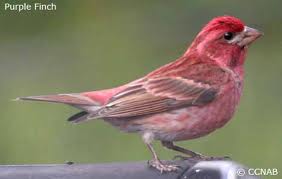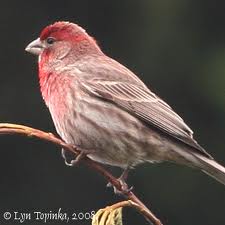Weeds and Wildlife
If you live in Kansas, there are about four days in the spring and four days in the fall when you can comfortably get outside and garden. (Comfortably is the operative word.) Like the rest of the country, we’ve had incredible amounts of rain so weeds are bountiful. One day last week, I decided I had to do something about them before they choked out everything else. I knelt in the bed by the patio with my back to the fence ready to weed my way forward when I heard the most beautiful bird song. I looked up to see a brown thrasher not ten feet away pecking between the patio bricks. I sat very still until he flew up to a branch on the silver maple and continued singing. Then he flew into a bushy spirea under our bedroom window. I waited until he emerged and then cautiously peeked around the bush until I spotted his Missus sitting nervously on a nest. Thrilled, I backed away.
Nesting birds fascinate me even if they are only sparrows. Our yard is a jungle of cedar, pine, perennials, bird baths, ponds and weeds so ferreting out all the bird nests isn’t easy. For example, a cardinal pair chose the gutter over the recreation room as their ideal spot. ??? I kept seeing the mom and pop team on the roof but it took me awhile to figure out what they were doing up there.
The silver maple is over a hundred years old. It is hollow all the way up and down and I shudder every time we have a big windstorm for fear it will blow down. It is, however, the perfect place for the neighborhood wild life to raise their young. Many generations of squirrels and raccoons have grown up there, not to mention blackbirds and woodpeckers. Fights do occur but all in all, they seem to get along remarkably well and to see two black eyed baby raccoons huddled together in the crouch of the tree while mama goes a hunting brings a smile to even the most urbanized souls.
Near the back fence sits an old shed in which we once stored gardening stuff. I mention it only because a hole underneath has become the favorite place for a ‘possum to raise her seemingly inexhaustible supply of young. A year or two ago, Louie carefully brought in six babies, one at a time. Each was about six inches long not counting the tail and had little needle sharp teeth. The first one ran under the sofa and we had to call the Prairie Village dog catcher to get him out. After that, we learned to pluck them up immediately by their tails (being extremely careful of those sharp teeth) and put them on the far side of back fence hoping mom would find them there. That summer we also learned, much to our neighbor’s relief, that me must shut the doggy door at bedtime. Otherwise, Louie would roam his territory all night long chasing and barking at nocturnal beings.
Back to bird watching, we now have purple finches at our feeders. I used to see them when lived on our farm down south but climate change has forced them to move further north. Now, they mingle with the red house finch and we have to look close to tell them apart. They aren’t the only backyard birds on the move. The Audubon Society did a study in 2009 and found 305 birds that are changing their winter and summer grounds including Robins, owls and chickadees. Wherever you live, be on the lookout for new species to your backyard.
Purple finch on the left: House finch on the right




Leave a Reply